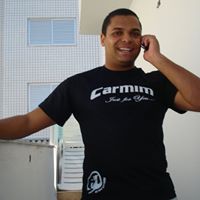George K Farney
Deceased
from Beverly, MA
- Also known as:
-
- Geo K Farney
- Phone and address:
-
3 Colgate Rd, Beverly Farms, MA 01915
(978)9692116
George Farney Phones & Addresses
- 3 Colgate Rd, Beverly, MA 01915 • (978)9692116
- 82 Herrick Rd, Boxford, MA 01921 • (978)8875843 • (978)8876029
Us Patents
-
Method And Apparatus For Reducing Noise In Crossed-Field Amplifiers
view source -
US Patent:40829790, Apr 4, 1978
-
Filed:Sep 29, 1976
-
Appl. No.:5/727722
-
Inventors:George K. Farney - Boxford MA
Fred A. Feulner - Boxford MA -
Assignee:Varian Associates, Inc. - Palo Alto CA
-
International Classification:H01J 2534
-
US Classification:315 393
-
Abstract:Noise in reentrant-stream crossed-field amplifiers is suspected of being generated by electrons re-entering the interaction region with large amplitude cycloidal motion near the slow-wave circuit. Means to increase the electric field in a portion of the drift region preceding the circuit lowers the noise, presumably by collecting these electrons. The field may be increased by decreasing the spacing between cathode and drift electrode or by applying a bias voltage on an insulated electrode.
-
Interdigital Slow Wave Circuit For Electron Tubes
view source -
US Patent:39537595, Apr 27, 1976
-
Filed:Mar 20, 1975
-
Appl. No.:5/560665
-
Inventors:George K. Farney - Boxford MA
Andrew S. Wilczek - Beverly MA
Roger A. LaPlante - Ipswich MA -
Assignee:Varian Associates - Palo Alto CA
-
International Classification:H01J 2534
-
US Classification:315 35
-
Abstract:An interdigital delay line for crossed field tubes has vanes extending from their interaction faces to a back wall. One end of each vane extends to the end of the face. The other end is cut out behind the interaction face leaving the face projecting. The interaction impedance is almost as high as that of a line with fingers supported by stubs at their centers, while the thermal dissipation is higher, approaching that of a line with vanes extending over the entire length of the fingers.
-
Microwave Tube With Directional Coupling Of An Input Locking Signal
view source -
US Patent:50846515, Jan 28, 1992
-
Filed:Oct 29, 1987
-
Appl. No.:7/114627
-
Inventors:George K. Farney - Boxford MA
-
International Classification:H01J 2348
-
US Classification:315 3951
-
Abstract:A microwave tube similar in structure to a magnetron includes an output port and a separate input port. The tube includes a cathode, a reentrant anode circuit and means for producing crossed electric and magnetic fields in an interaction space between the cathode and the anode circuit. The microwave tube can be used as an injection-locked or injection-primed oscillator or as an amplifier. An input signal coupling network substantially blocks transfer of internally-generated RF energy at the operating frequency in a reverse direction through the input port toward the input signal source. The input coupling network includes an anode loop coupled between two points of equal phase and magnitude in the standing wave which exists on the anode circuit, and an input loop positioned for inductive coupling of the input signal to the anode loop. The input signal can be coupled to the input loop with a coaxial transmission line, a ridge waveguide or a twin-wire transmission line. The microwave tube can utilize conventional vane type or bar type anode circuits or can utilize mixed line anode circuits having both forward wave and backward wave sections.
-
Magnetron Slot Mode Absorber
view source -
US Patent:40538508, Oct 11, 1977
-
Filed:Sep 23, 1976
-
Appl. No.:5/726088
-
Inventors:George Kenneth Farney - Boxford MA
William Allen Gerard - Andover MA -
Assignee:Varian Associates, Inc. - Palo Alto CA
-
International Classification:H03B 910
-
US Classification:331 91
-
Abstract:In a coaxial magnetron the resonant circuit interacting with the electrons is coupled to a stabilizing resonator operating in a mode with circular electric field. The coupling is thru a set of slots in the intervening wall. Undesirable resonances localized in the slots are damped by lossy material at the ends of the slots. Undesirable damping of the cavity mode is prevented by a conducting shield covering exposed area of the lossy material and spaced into the cavity away from the slots.
-
High Gain Crossed Field Amplifier
view source -
US Patent:40877183, May 2, 1978
-
Filed:May 6, 1976
-
Appl. No.:5/683990
-
Inventors:George K. Farney - Boxford MA
-
Assignee:Varian Associates, Inc. - Palo Alto CA
-
International Classification:H01J 2534
-
US Classification:315 393
-
Abstract:The allowable gain of a crossed-field amplifier tube is increased by tapering the slow-wave interaction circuit to a smaller spatial period in the direction of circuit power flow. Concurrent variation of the electron beam drift velocity by tapering the dc electric or magnetic field further improves the gain and efficiency.
-
Phase Smoothing Cathode For Reduced Noise Crossed-Field Amplifier
view source -
US Patent:54122813, May 2, 1995
-
Filed:Mar 31, 1993
-
Appl. No.:8/040514
-
Inventors:George K. Farney - Boxford MA
Chris L. Wheeland - Winfield PA
Kenneth F. Ramacher - Montoursville PA
Edward M. Doyle - Montoursville PA
Michael S. Worthington - Hughesville PA -
Assignee:Litton Systems, Inc. - Beverly Hills CA
-
International Classification:H01J 2305
H01J 2542 -
US Classification:315 393
-
Abstract:A crossed-field amplifier (CFA) includes a cylindrical cathode having an emitting surface coaxially disposed within an annular anode structure. The cathode has at least one circumferential groove disposed in the emitting surface. The grooves are relatively deep in comparison with their width. The grooves provide a phase smoothing of the rotating electron cloud spokes operative during crossed-field interaction. CFA noise is reduced by removal of the out-of-phase electrons. Due to their deeply cycloiding paths, these out-of-phase electrons become trapped in the grooves within a region generally shielded from the electric field of the CFA.
Resumes

George Farney
view sourceIndustry:
International Affairs

International Affairs Professional
view sourceLocation:
United States
Industry:
International Affairs
Youtube
Myspace

George Farney
view source
George Farney
view sourceFriends:
Sue Clendenen Crenshaw, Lisa Smith Brewington, Maddison Waller, Pam Sudduth
Get Report for George K Farney from Beverly, MADeceased





